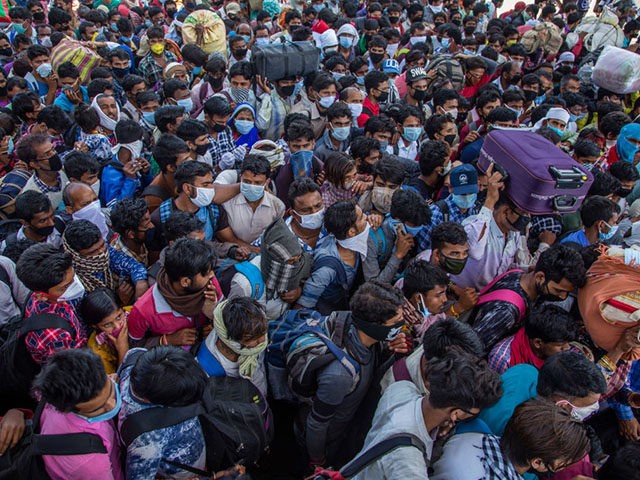The Center for Monitoring Indian Economy (CMIE), a privately owned think tank based in Mumbai, said Monday over 10 million Indians lost their jobs during the “second wave” of coronavirus infections and 97 percent of Indian households reported a decline of income since the beginning of the pandemic.
According to CMIE chief executive Mahesh Vyas, unemployment for May should be roughly 12 percent, which is four percent higher than it was in April but still greatly improved over the pandemic-driven record high of 23.5 percent in May 2020.
A CMIE survey completed in April found that only 3 percent of Indians reported income gains during the pandemic year, while 55 percent said their incomes declined and 42 percent said it remained static.
“If we adjust for inflation, we find that 97 percent of the households in the country have witnessed a decline in incomes during the pandemic,” he said.
Vyas said the economy is beginning to “open up,” but it could take a year for India’s major job-creating businesses in the “formal economy” to return to full employment. Most Indians are employed by the “informal” economy, which loosely means working without contracts or benefits, and has come to include many jobs offered by large corporations.
CMIE tracked a steep loss of over seven million jobs during the second coronavirus wave and forecast “bleak” growth prospects for the coming year — as much as three percent below earlier projections of 11 to 12 percent growth from analysts such as the International Monetary Fund (IMF).
“The downward revision of growth projections will be driven by stringency in restrictions by states, relatively slow vaccination pace and the possibility of a third wave of the pandemic,” the think tank said.
The Indian government released economic data on Monday that showed a 7.3 percent economic contraction for 2020, making it India’s worst recession since it became independent from Britain in 1947.
The recession technically ended in the fourth quarter, as the Indian economy grew by 1.6 percent, but not before years of careful development were all but wiped out. Analysts worry that modest growth might have continued through the first quarter but been flattened by the second wave of coronavirus lockdowns, and the effect could be even harsher on India’s poor this time because the second wave is hitting rural areas much harder than the urban-focused initial wave of infections did.
Another danger is that rising unemployment and more lockdown fears might cause consumer demand to crash, which in turn could wipe out more jobs and kill off tottering businesses. Critics of Indian Prime Minister Narendra Modi’s coronavirus policies contend he has not offered enough financial support to individuals, so he is struggling to keep businesses afloat while their prospective customers have no money to spend.
Modi’s critics also say India’s vaccination rollout is moving much too slowly, raising fears of a third wave and more lockdowns in the future. This could have particularly dire implications for rural jobs that require a high degree of human interaction, and migrant workers who can miss an entire season of work if they cannot begin their migrations on time.
For those reasons, Nikkei Asia on Tuesday predicted India’s recovery from the pandemic will be a “long slog” unless the pace of vaccinations picks up considerably.

COMMENTS
Please let us know if you're having issues with commenting.